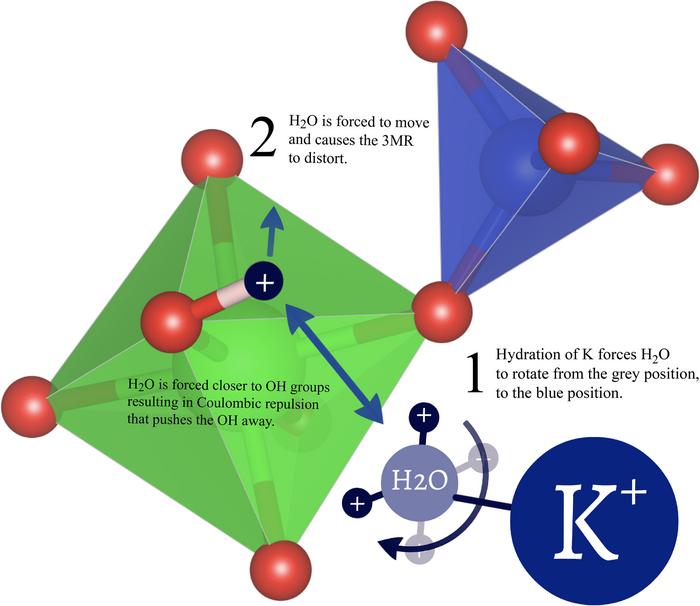Los Angeles, CA (March 26, 2024) — In a groundbreaking discovery, scientists at the Natural History Museum of Los Angeles County and pharmaceutical firm AstraZeneca have published the first-ever mineral-based treatment for a widespread disease. Reported in the journal PLOS One, the study by mineralogist Dr. Aaron Celestian, Curator of Mineral Sciences at NHM, and pharmaceutical chemist Dr. Jason Lively, opens the door to more advanced mineral-based treatments in the future.

Credit: Jason Lively, Aaron J. Celestian
Los Angeles, CA (March 26, 2024) — In a groundbreaking discovery, scientists at the Natural History Museum of Los Angeles County and pharmaceutical firm AstraZeneca have published the first-ever mineral-based treatment for a widespread disease. Reported in the journal PLOS One, the study by mineralogist Dr. Aaron Celestian, Curator of Mineral Sciences at NHM, and pharmaceutical chemist Dr. Jason Lively, opens the door to more advanced mineral-based treatments in the future.
The paper describes how crystals have been used as a new treatment for hyperkalemia, a disease that affects roughly 350 million people across the planet. Hyperkalemia strikes when a person has too much potassium in their blood and cannot regulate potassium levels. It can result in cardiac arrest in acute cases or cause kidney and liver dysfunction or failure in persistent cases that last decades.
“For people suffering from hyperkalemia, the biological processes that regulate potassium in the body are not working optimally, so they have to constantly manage their condition through medications that have potentially harmful side effects and dietary restrictions,” says Celestian.
The new treatment lets patients flush the excess potassium through ion transfer. “The crystals find the potassium, absorb it, and then excess gets filtered out of the body through the kidneys,” says Celestian.
The researchers used the crystal structure of cubic zirconium silicate to develop a treatment without harmful biological interaction—and associated negative side effects. This is a new way to alleviate deleterious effects on patients that other treatments have.
“It’s like material engineering using minerals as a template,” says Celestian. “Nature’s already grown incredible tools for treating illnesses, and we’re only just beginning to harness those tools.”
Besides having significantly less biological interaction, mineral-based therapies might offer the chance for more durable treatments. Using the structure of crystals means that similar treatments could potentially overcome mutations that make things like viruses so difficult to treat effectively.
“Minerals probably don’t care about how a virus mutates, as long as it has those building block proteins that the mineral likes to interact with,” says Celestian.
MEDIA CONTACTS
Amy Hood
213-763-3532
[email protected]
Tyler Hayden
213-763-3508
[email protected]
Journal
PLoS ONE
DOI
10.1371/journal.pone.0298661
Method of Research
Experimental study
Article Title
In situ potassium and hydrogen ion exchange into a cubic zirconium silicate microporous material
Article Publication Date
21-Mar-2024
COI Statement
Author J. Lively is employed by AstraZeneca at the time of publication.
This work received partial financial support from ZS Pharma (subsequently acquired by AstraZeneca). Additional financial support was received from the John Jago Trelawney and Bandy Endowments to the Natural History Museum Mineral Sciences Department. This research used resources of the Advanced Photon Source, a U.S. Department of Energy (DOE) Office of Science User Facility operated for the DOE Office of Science by Argonne National Laboratory under Contract No. DE-AC02-06CH11357.




